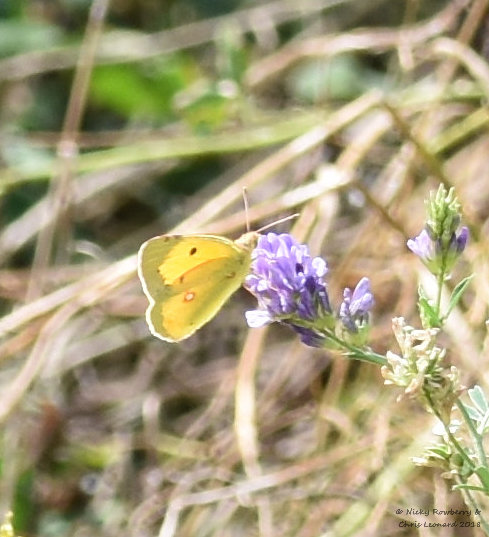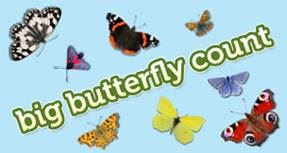The Big Butterfly Count results were announced last week, so it seemed a good time to take a look at the butterflies we’ve had in our own garden this year. Sadly the Big Butterfly Count suggested a poor year for butterflies, although the very warm spring may have meant their numbers peaked before the Count took place – let’s hope that’s the reason.
It might not have been a great year nationally, but we have actually done pretty well here in the garden. By the end of 2019 we had recorded 18 butterfly species in the garden in the 12 years or so we have lived here. In 2020 we were very pleased to add two more to that list.
In the middle of July I was amazed to spot a Silver-washed Fritillary in the garden. It was a bit tatty and probably a bit lost, but you take what you can get with wildlife sightings! Having an overgrown, brambled covered garden had paid off. For once I even had the camera to hand, so snapped a few photos before dashing (artistic license here for the speed) back into the house shouting for Chris to come out and see. It moved from the brambles to a buddleia and we both managed a few more photos before it realised it probably wasn’t in the right place and flew off.
Seeing a Silver-washed Fritillary in our own garden was particularly enjoyable as, thanks to Covid, we hadn’t manage to get out to many of our usual places, so hadn’t seen them anywhere else this year.
Then a couple of weeks later we were sitting by the pond (as so much of 2020 has been spent) when a small butterfly landed on the Eryngium flowers. We thought at first it was a female Common Blue, which in itself would be a bit of a rarity in the garden, but it turned out to be a Brown Argus – our 20th butterfly species for the garden.
 Besides the newcomers above, we’ve had a fairly steady stream of butterflies throughout the summer. As with the Big Butterfly Count results, the white butterflies were the most numerous ones – Small Whites in particular seemed to have a good year here in Malvern. I try and record the butterflies I see daily for the Garden Butterfly Survey and for most days through the summer I was seeing at least some Small Whites and some days up to 8 or 9 in one go. The numbers of Painted Lady butterflies we saw were down on last year, but then last year was a particularly good year for them nationwide.
Besides the newcomers above, we’ve had a fairly steady stream of butterflies throughout the summer. As with the Big Butterfly Count results, the white butterflies were the most numerous ones – Small Whites in particular seemed to have a good year here in Malvern. I try and record the butterflies I see daily for the Garden Butterfly Survey and for most days through the summer I was seeing at least some Small Whites and some days up to 8 or 9 in one go. The numbers of Painted Lady butterflies we saw were down on last year, but then last year was a particularly good year for them nationwide.
 Commas, Red Admirals, Peacocks and Small Tortoiseshells all appeared, although never in more than 1s or 2s, despite us having a lot of Buddleias in the garden. The grassy areas (we can’t call them lawns any more) produced Ringlets, Gatekeepers and Meadow Browns and the Speckled Woods & Holly Blues liked the brambles and apple tree. I’d planted up a few Bird’s Foot Trefoils in the hope of attracting some Common Blues, so was really chuffed when one finally deigned to appreciate my efforts and land on the flowers.
Commas, Red Admirals, Peacocks and Small Tortoiseshells all appeared, although never in more than 1s or 2s, despite us having a lot of Buddleias in the garden. The grassy areas (we can’t call them lawns any more) produced Ringlets, Gatekeepers and Meadow Browns and the Speckled Woods & Holly Blues liked the brambles and apple tree. I’d planted up a few Bird’s Foot Trefoils in the hope of attracting some Common Blues, so was really chuffed when one finally deigned to appreciate my efforts and land on the flowers.
The final treat for the year was a second brood Small Copper which took advantage of some of the late summer Asters growing wild all over our garden. It’s got blue spots in the wings which apparently makes it the caeruleopunctata form, which was an interesting snippet to learn about.
So it may not have been particularly good news nationally for butterflies, but it seems our Malvern garden has been lucky. Whether we’ve genuinely had more species visiting or whether we’ve just been seeing more because, thanks to lockdown, we’ve spent more time in the garden I don’t know. Whatever the reason, they have certainly been very welcome little rays of sunshine in an otherwise troubled year.


























































